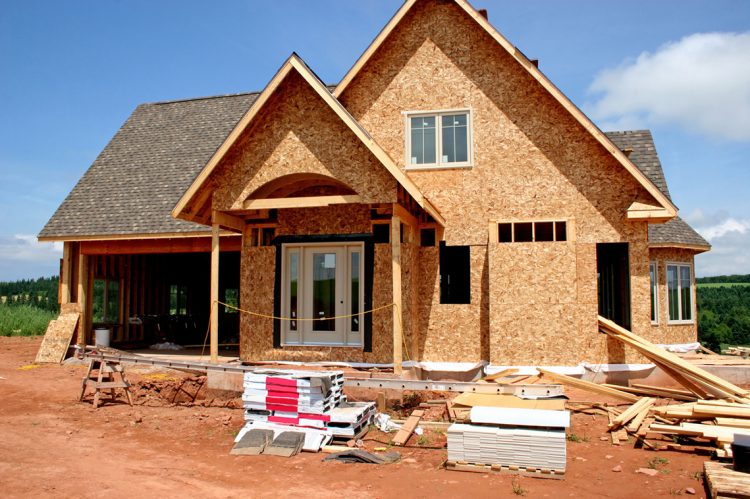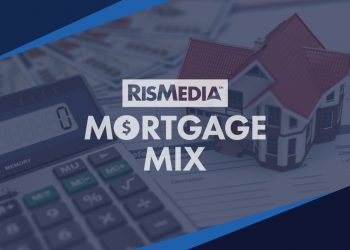Just as folks started getting used to hearing about the cooling housing market, new single-family home sales surprisingly snapped the trend with a sizable surge in August.
According to a joint report from the U.S. Census Bureau and the Department of Housing and Urban Development (HUD), the seasonally adjusted sales rate was 685,000, marking a 28.8% leap above the revised July rate of 532,000.
The increase in sales activity broke from an otherwise consistent downward trend. Still, August’s performance is slightly lower—0.1%—than it was in August 2021, which has an estimate of 686,000.
Last month’s spike helped push new home sales to their highest levels since March, according to experts who suggest that the performance is likely due to a buyer rush to lock in the lowest mortgage rates possible ahead of expected increases.
Key findings:
- 685,000 new single-family homes sold in August.
- The median sales price of new houses sold in June was $436,800.
- The average sales price was $521,800 in August.
- The seasonally adjusted estimate of new homes for sale at the end of June was 461,000.
What the experts think:
“In a surprise turnaround from recent months, new home sales surged to their highest level since March,” said Dr. Lisa Sturtevant, chief economist for Bright MLS. “The unexpected bump in new home sales activity may be reflecting buyers who rushed into the market to get ahead of rising mortgage rates.
“Despite the August bump, new home sales will likely be sluggish throughout the rest of the year. New single-family housing construction has stalled, residential building permits are down, and homebuilder confidence has tanked as builders face growing costs, higher interest rates and slower buyer traffic.
“New home sales have been tracking below last year’s levels for most of the year, reflecting the pullback in buyer demand resulting from higher mortgage rates. However, there is still a long-term housing deficit where housing demand is outpacing supply. Price growth will ease, with some absolute price declines in some local markets in the near term, but the supply imbalance means that over the longer-term, home prices will continue to rise.
“The pullback in new residential construction will have ripple effects throughout the broader economy. The housing sector accounts for between 15% and 20% of the total GDP. It’s not just about the construction and sale of homes, but the housing sector spins off a significant amount of economic activity—from financial and legal services to moving activities to furniture and other purchases. When there is less homebuilding and fewer transactions, overall economic growth will slow,” Sturtevant concluded.
“With housing affordability at a more than 10-year low and the Federal Reserve continuing to aggressively raise interest rates to rein in stubbornly high inflation, policymakers must find ways to reduce construction costs that are delaying home projects and putting upward pressure on home prices,” said Jerry Konter, chairman of the National Association of Home Builders (NAHB) and a home builder and developer from Savannah, Georgia.
“The sales gain in August reflects that there is clearly sidelined demand for housing, but it is being constrained by rising interest rates that are pricing many potential consumers out of the market, particularly entry-level buyers,” said NAHB Chief Economist Robert Dietz. “After a brief lull when mortgage rates fell below 5.3% for much of August, they have since jumped much higher in September and are now approaching 7%. The Fed should take careful note of the weakening of the housing market given the policy lag involved with monetary policy. Housing is a leading indicator of economic conditions.”
Dietz also stated in a recent Tweet, “August new home sales data is an outlier due to a brief and now ended retreat for mortgage rates. Sales increased 29% to a 685K annualized rate. However, new home sales are down more than 14% year-to-date. And sales will be lower in September as mortgage rates increase.
“The affordability challenge is clear, particularly for first-time buyers. A year ago, 25% of new home sales were priced below $300K. In August, this share fell to just 12%. First-time buyers are increasingly priced out of the market. Homeownership rate declines are ahead,” he concluded.













The Key Findings in the article are incorrect. It is absolutely impossible to have sold 685,000 new homes in one month. There are not even that many at all stages of construction. Critical data needs to be correct for a reader to consider the writing factual.